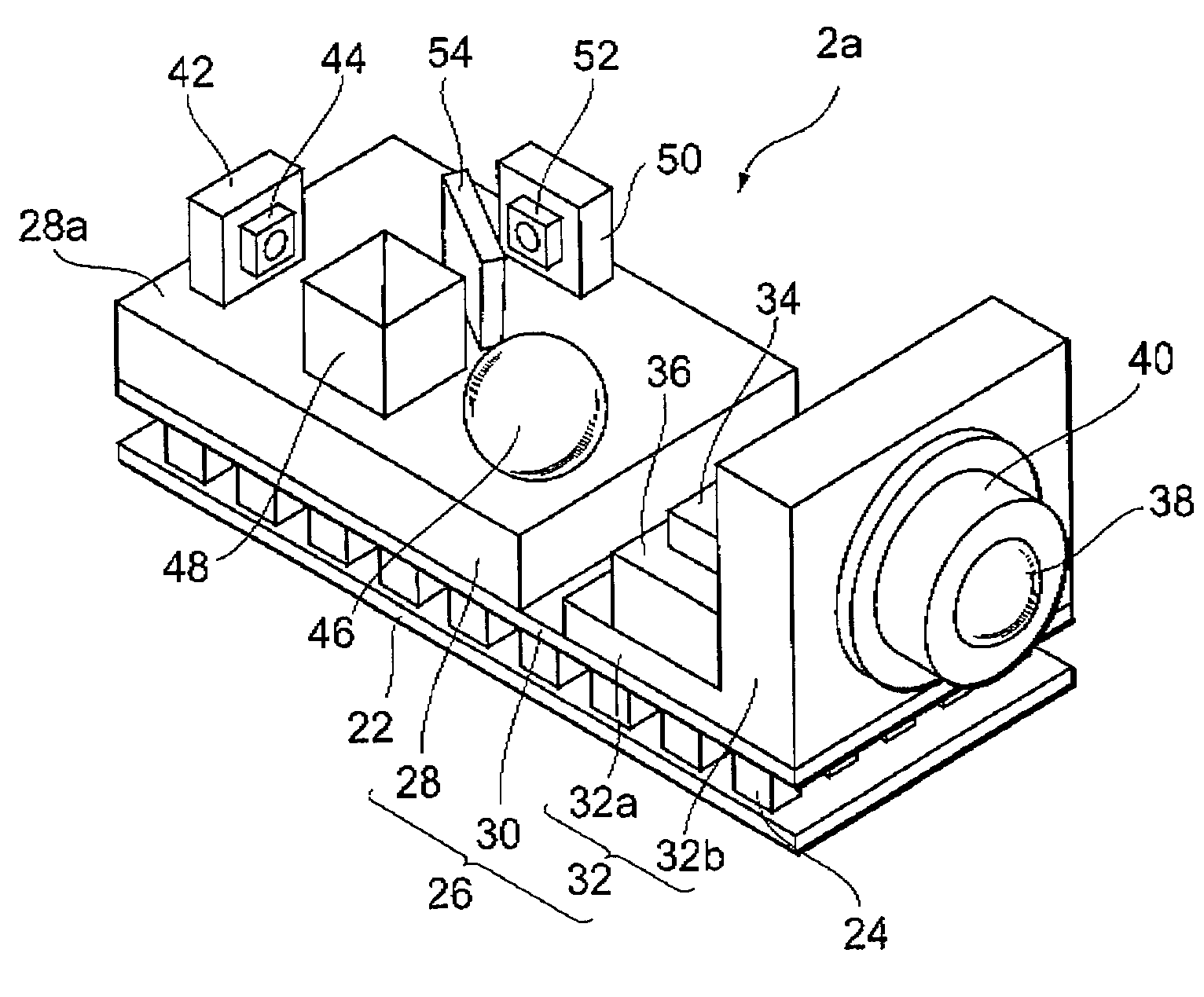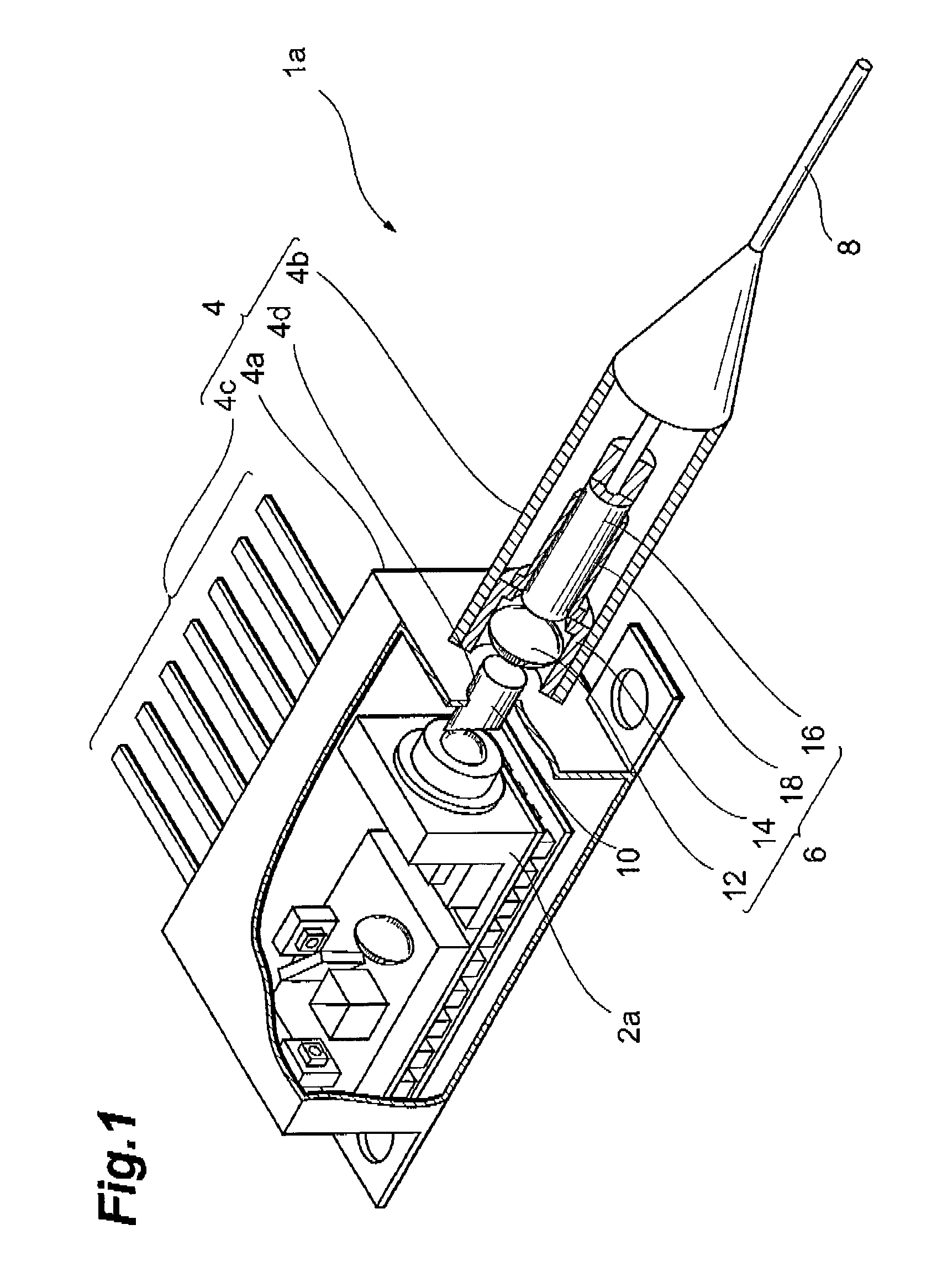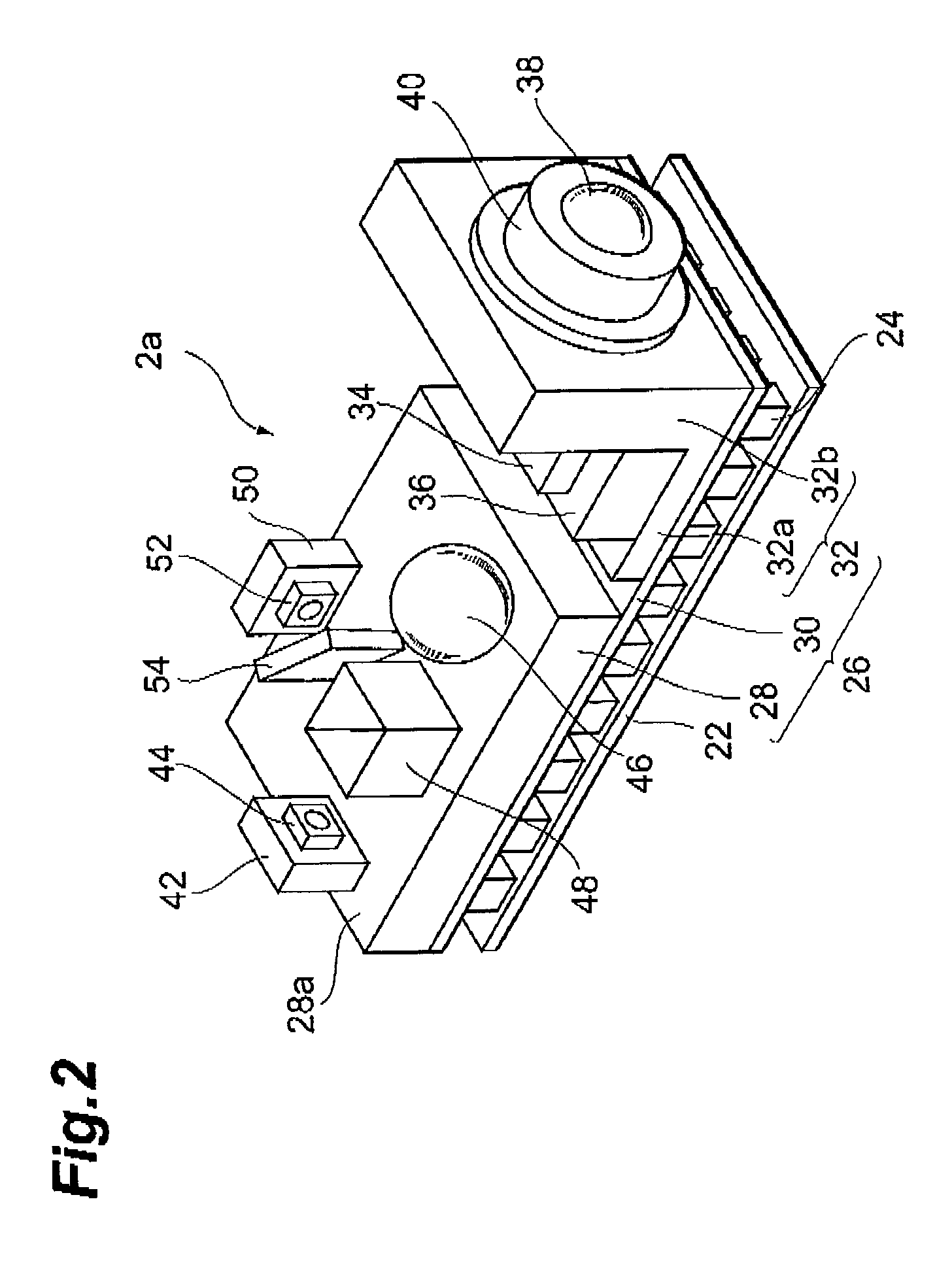Multimode semiconductor laser module, wavelength detector, wavelength stabilizer, and Raman amplifier
a multi-mode semiconductor laser module and amplifier technology, applied in semiconductor lasers, instruments, optical elements, etc., can solve the problem of inability to stabilize the output wavelength
- Summary
- Abstract
- Description
- Claims
- Application Information
AI Technical Summary
Benefits of technology
Problems solved by technology
Method used
Image
Examples
first embodiment
[0044]FIG. 1 is a partially cutaway perspective view illustrating the structure of a multimode semiconductor laser module 1a of this embodiment. The semiconductor laser module will be referred to as a LD module hereinbelow. The LD module 1a comprises a main part 2a, a housing 4, an optical coupling part 6, and an optical fiber 8.
[0045]The main part 2a provides multimode laser light whose wavelength is stabilized with some accuracy. The structure of the main part 2a will be described below in greater detail.
[0046]The housing 4 comprises an accommodation part 4a, an optical fiber supporting part 4b, a lead terminal 4c, and a light passing aperture 4d. The accommodation part 4a determines an arrangement space for accommodating the main part 2a. The optical fiber supporting part 4b is provided on the front wall of the accommodation part 4a. The fiber supporting part 4b holds the optical fiber 8 so that the optical fiber 8 is optically coupled with the main part 2a. The lead terminals 4c...
second embodiment
[0069]The second embodiment of the LD module in accordance with the present invention will now be described. The arrangement of the components in this embodiment is different from that in the first embodiment. In this embodiment, a light-receiving element for wavelength monitoring is disposed so as to receive light reflected by an optical filter. The other structural features are identical to those of the first embodiment.
[0070]FIG. 7 is a schematic view illustrating the arrangement of the components in the LD module of this embodiment. As shown in FIG. 7, the light-emitting element 52 receives reflected light G from the optical filter 54. Therefore, the output electric signal of the light-receiving element 52 is affected by the reflection characteristic of the filter 54. In other words, the reflection wavelength region of the filter 54 affects the output of the light-receiving element 52.
[0071]Regardless of whether the optical filter 54 is a long-wavelength-pass filer, a short-wave...
third embodiment
[0073]Referring to FIG. 8, the third embodiment of the LD module in accordance with the present invention will now be described. FIG. 8 is a perspective view illustrating another example of the main part of the LD module 1a. The LD module of this embodiment comprises a main part 2b shown in FIG. 8 instead of the main part 2a of the LD module 1a of the first embodiment. The other structural features are identical to those of the LD module 1a.
[0074]In the main part 2b, mounting members 60, 32 and 62 are arranged on the arrangement member 30 in the order of the description along an axis. The chip carrier 42 is disposed on the main surface 60a of the mounting member 60 to fix a light-receiving element 74 for power monitoring. The light-receiving element 44 faces the light-reflecting surface of the semiconductor laser element 34. Therefore, the light-receiving element 44 is optically coupled with the light-reflecting surface of the laser element 34 directly without interposing any optic...
PUM
 Login to View More
Login to View More Abstract
Description
Claims
Application Information
 Login to View More
Login to View More - R&D
- Intellectual Property
- Life Sciences
- Materials
- Tech Scout
- Unparalleled Data Quality
- Higher Quality Content
- 60% Fewer Hallucinations
Browse by: Latest US Patents, China's latest patents, Technical Efficacy Thesaurus, Application Domain, Technology Topic, Popular Technical Reports.
© 2025 PatSnap. All rights reserved.Legal|Privacy policy|Modern Slavery Act Transparency Statement|Sitemap|About US| Contact US: help@patsnap.com



